Contents
- Version Control - Git
- HTML
- CSS
Version Control with Git
- Why version control?
- Why Git?

Git Theory
Images from: Pro Git
Snapshots
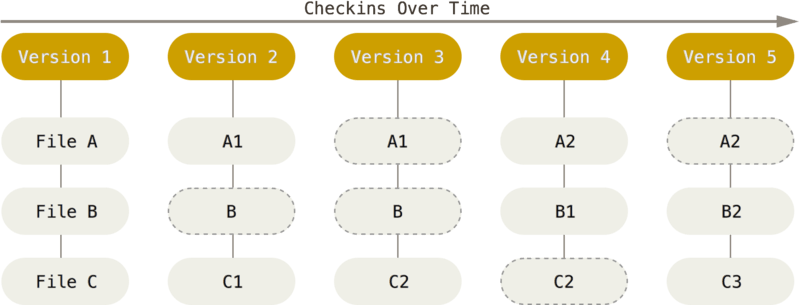
A Commit
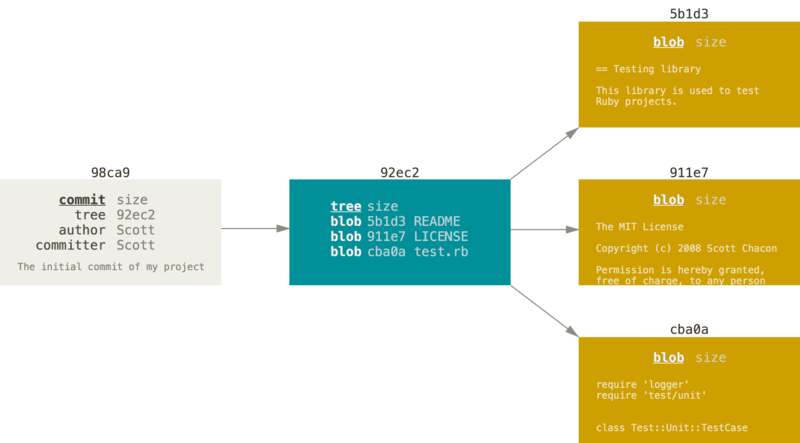
3 Commits

Branch "Pointers"
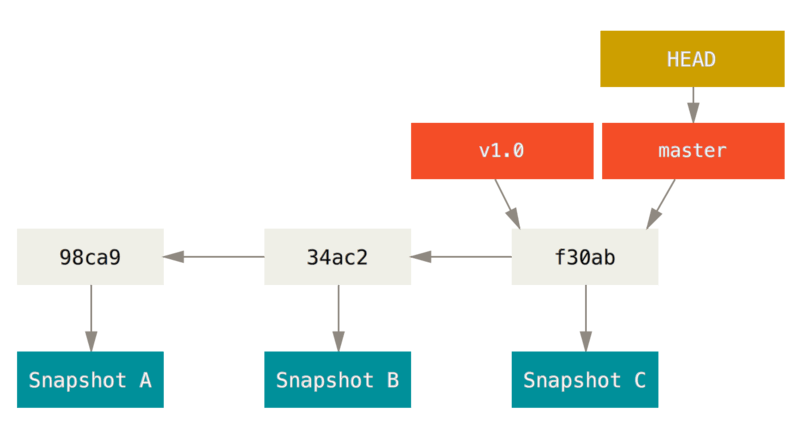
Branches
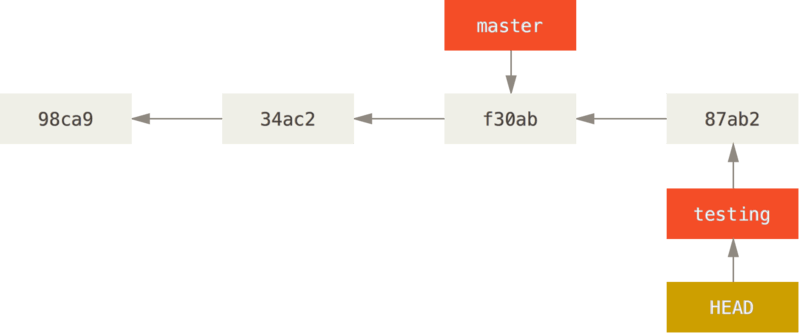
A Commit History

Preparing to Merge

After Merge
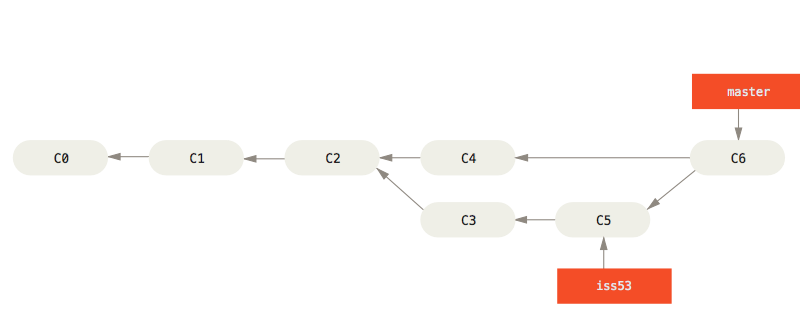
Complex Workflows
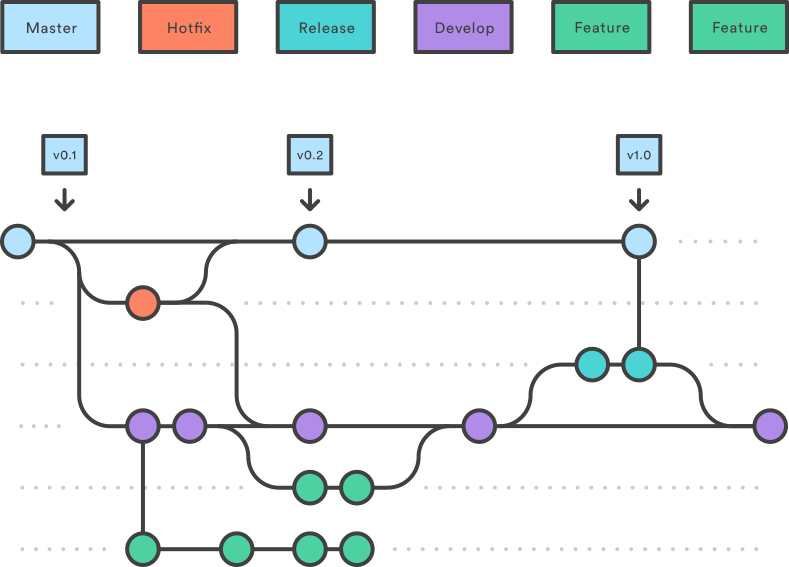
Image from: Bitbucket tutorial
Git in Practice
Demonstration of regular workflow -- single developer, local and remote repository
3 States
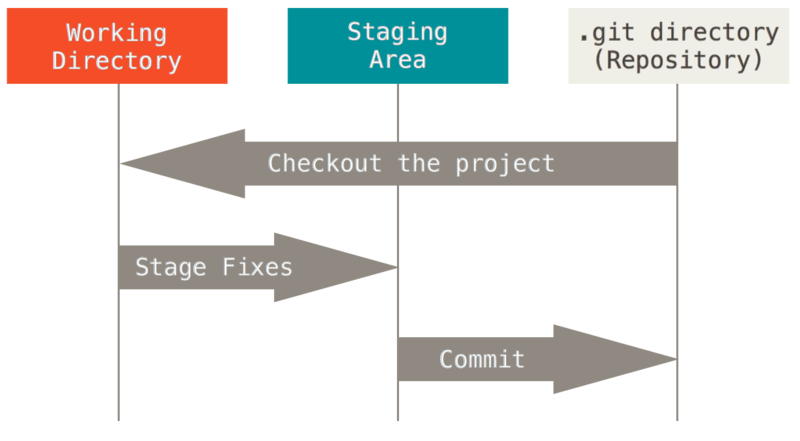
Lifecycle
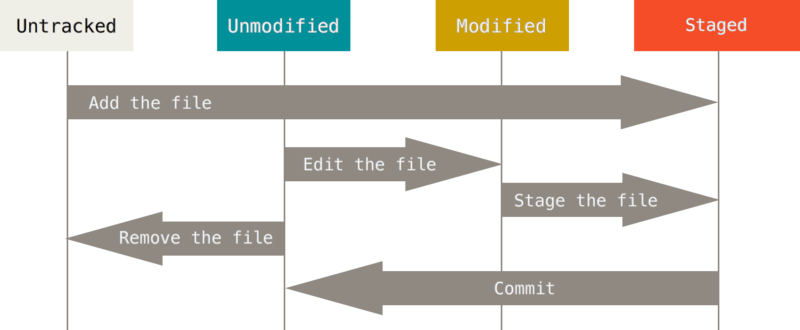
Start from Scratch -- local repo
- Initialize
- add, commit
- Inspect
Start from Scratch -- local repo + remote
- Initialize
- fetch/pull, add, commit, push
Other Topics
- clone
- branch, checkout
- merge
The Web
| HTML | Meaning and Content |
| CSS | Presentation & Style |
| Javascript | Scripting, manipulate DOM |
| HTTP | Transport, client-server behavior |
HTML
<!DOCTYPE html>
<html>
<head>
<meta charset="UTF-8">
The Title
</head>
<body>
A Main Heading
Some text in a paragraph.
- First item
- Second item
Link to Google
</body>
</html>
W3C Standard
Element Attributes
Elements have name / value pair attributes
<p lang="en-us" class="main-content">Some paragraph</p>
<p id=extra_info hidden>More stuff</p>
<input type=submit value='Submit' />
<input type="text" name="the username" maxlength="30" />
id Attribute
A global attribute. Used to uniquely identify an element (from CSS or Javascript).
class Attribute
Used to make this element a member of a named class. Also a global attribute.
Common use of id attribute
<form action="/form-handler-page" method="post">
<label for="msg">Message:</label>
<textarea id="msg" name="user_message"></textarea>
<button type="submit">Send your message</button>
</form>
Common use of class attribute
<pre><code class="hljs python snippet">
def foo(a):
print(a)
</code></pre>
Layout Algorithm
Two categories of elements:
- Block Level Elements
- Always start on a new line, they stack vertically
- Inline Elements
- Appear to continue on the same line as their neighboring elements, placed horizontally until the end of the line
Block Level Elements
Examples include
<form> |
<p> |
<table> |
<hr> |
<h1> |
<ol> |
<li> |
<div> |
Inline Elements
Examples include
<a> |
<em> |
<strong> |
<img> |
<sub> |
<button> |
<input> |
<span> |
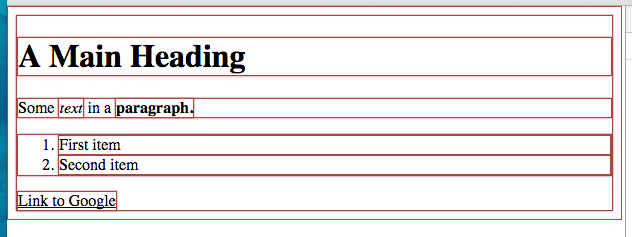
Styling and Layout with CSS
- Style sheet language
- Associates style rules with HTML elements
- Styles "cascade", or have known order of precedence
- Each rule has one or more selectors and a declaration block
body {
font-family: Arial, Verdana, sans-serif;
font-size: 12px;
color: #665544;
}
Selectors
Select which HTML elements the rule(s) apply to
/* Select all elements */
* { }
/* Select specific elements, here all <h1>, <h2> and <h3>
(using grouping syntax) */
h1, h2, h3 { }
/* Select all elements where class attribute has value "questions" */
.questions { }
/* Select all <p> elements where class attribute has value "questions" */
p.questions { }
/* Select all elements where id attribute has value "topstory" */
#topstory { }
And lots more
/* Matches any F element that is a descendant of an E element */
E F { }
/* Matches any F element that is a child of an element E */
E > F { }
/* Matches any F element immediately preceded by a sibling element E */
E + F { }
/* Matches element E when E is the first child of its parent */
E:first-child { }
/* Matches element E if E is the source anchor of a hyperlink
of which the target is not yet visited or already visited */
E:link { }
E:visited { }
/* Matches E during certain user actions */
E:active { }
E:hover { }
E:focus { }
/* Matches any E element with the "foo" attribute set (to any value) */
E[foo] { }
/* Selectors can be combined: */
div p *[href] { }
div ol>li p { }
Precedence (Cascading)
When two or more selectors match an element:
- If identical, the latter one applies, otherwise
- The more specific one takes precedence (specificity)
- A rule labeled "!important" indicates it should take precedence
Inheritance
Some properties are inherited, e.g. font-family, font-size, font-weight, color
You can force inheritance of a parent's property with the "inherit" value
Properties
Just about anything you can think of. Properties for:
- Color
- Text
- Boxes
- Lists, tables, forms
- Layout of elements and flow
- Images
Where to put it?
<head>
<style type="text/css">
body {
background-color: silver;
color: white; }
</style>
or
/* File: css/styles.css */
body {
background-color: silver;
color: white; }
Examples
From HTML & CSS book